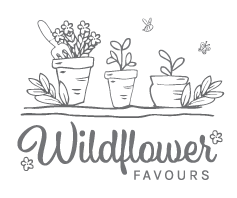
Unbeknown to a lot of people, the UK has rainforest habitat. At this comment, a yelp of startled surprise is anticipated. Scotland has rainforest – and it is an endangered and rare habitat. It is a temperate rainforest – a type of rainforest that is rare the world over. The rainforest area is along the west coast of Scotland – 30,000 hectares is all that remains. This is just 2 per cent of Scotland’s woodland. remaining 63,000 hectares of woodland along the coast that isn’t rainforest is a potential site for rainforest plants and there have been calls to protect these areas, for temperate rainforest occur in less than 1 per cent of the planet. It is also known as Celtic rainforest and Atlantic woodland. It is abundant with trees, lichens, fungi, ferns, liverworts and mosses, a magical place. These species thrive due to the high levels of rainfall, clean air and relatively mild temperatures all year round, which creates the humid conditions needed for the special species that make this place their home.
A lichen is a combination of two organisms – a fungus and an alga/cyanobacteria.
Mosses and liverworts are ancient non-flowering plants, having been on the planet for 400 million years. What is the difference between them? Mosses have small leaves that grow all round their stems. Liverworts have two ranks of leaves either side of their stems.
A Few Rainforest Residents
The lichens that this rainforest supports are the most important and delicate of all rainforest species, eg, Octopus Suckers, Black-eyed Susan and Smokey Joe.
Tree Lungwort (Lobaria pulmonaria)

This is a large ‘leafy’ lichen. Its lobes look like human lungs. In fact, in medieval times, doctors used Tree Lungwort to treat lung disorders! It is found on tree trunks and branches. The west of Scotland is a particular ‘hotspot’ for this lichen due to the relative lack of atmospheric pollution here during the 19th Century Industrial Revolution. It is much more scarce in all other parts of Britain. When this lichen is dry it looks grey/bluish, but once it has rained, it changes to green.
Slender Mouse-tail Moss (Isothecium myosuroides)

This moss lives on tree trunks and boulders, forming dense mats. It has a tree-like growth form – unbranched near it’s base, becoming branched above. Its stems grow parallel to the ground or surface they are growing on. This moss provides a forest habitat in miniature for the micro-fauna of the woods.
Greater Whipwort (Bazzania trilobata)

Unlike other liverworts, the leaves of this species do not lie flat, but instead curl down from the stem to give it a more three-dimensional appearance. Its mainly found on earth banks, around tree bases, on boulders, rotting wood and occasionally tree trunks.
How is the Rainforest Threatened?
The remnants of oak, birch, ash, native pine and hazel woodlands are small, fragmented and isolated from each other. Almost all show little or no regeneration due to high levels of grazing; almost half are being choked with Rhododendron ponticum and a fifth have been planted up with exotic conifer plantations. They also face threats from diseases like ash dieback, as well as nitrogen pollution, infrastructure development and climate change.
Climate change is a major issue for the rainforest because bryophytes and lichens are particularly sensitive to atmospheric pollution.
Rhododendron was mentioned above – this is a major threat to the rainforest. It is an invasive species and is already widespread in the forest and can outcompete the native trees there.

Credit Caz Austen / WTML (Saving Scotland’s Rainforest project)
How Can We Help Save Scotland’s Rainforest?
Plantlife is one of the lead organisations in the Alliance for Scotland’s Rainforest, a group of twenty organisations that are committed to the conservation and sustainable development of Scotland’s rainforest. Here at Wildflower Favours we are donating £1 from every order over £100 (before postage) towards Plantlife’s rainforest campaign. We all need to do what we can to help protect this rare and beautiful habitat.


Credit Phil Formby / WTML (Saving Scotland’s Rainforest project)
About Plantlife
Plantlife is a British conservation charity working nationally and internationally to save threatened wild flowers, plants and fungi. They have many campaigns and they own nearly 4,500 acres of nature reserve across England, Scotland and Wales and have 11,000 members and supporters. The prince of Wales is their patron.
They have 3,495 unique species on their reserves and have created or restored 15,800 acres of meadow. Fantastic!

Plantlife’s conservation experts work with landowners, businesses, conservation organisations, community groups and governments to save our rarest flora and ensure familiar flowers and plants continue to thrive.
Plantlife was instrumental in the creation of the Global Strategy for Plant Conservation and is a member of Planta Europa, a pan-European network of over 60 wild plant conservation organisations.
Registered in England and Wales, Charity Number 1059559.
Registered in Scotland, Charity Number SC038951
We are so pleased to support Plantlife in their work to save the UK’s wild habitats and flora.


